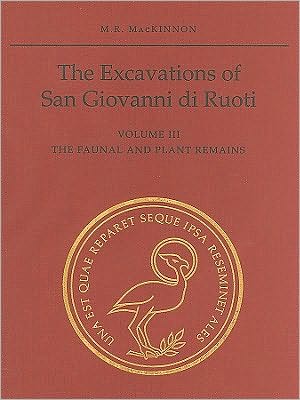

 |

|

The average rating for The Excavations of San Giovanni di Ruoti: Volume III: The Faunal and Plant Remains based on 2 reviews is 3 stars.
Review # 1 was written on 2020-06-08 00:00:00 Christopher Benke Christopher BenkeThis book is, hands down, the best I have ever read on the building of English country houses. It covers, comprehensively, the who, what, why, when, where, and how of the building of country houses. What you will not find is deep coverage of the evolution of architecture and interior design styles -- this is a book for those who already have a good understanding of them, so if you don't know Baroque from Palladian, it would be good to read up on architecture first to get a full understanding, although it's not absolutely necessary. Among the most interesting things to me (and there were a lot of them -- I highlighted SO MUCH of this book) was that usually the funds for building or rebuilding a house were not drawn from estate rents. Instead they came from marriage dowries, secondary income from trade or industry, or bonus windfalls that happened to reach a particular generation. Later in the Victorian era, it became more common (in part because of the availability of land) for people to build houses that were more purely a large house in the country, without the surrounding acreage that supported the estate through rents -- they had sources of income from elsewhere. In reading this I also got some very useful rule-of-thumb numbers: to figure on £1 per acre as income for an estate and the cost of building a country house at a year's income for an estate. Both of these could and did vary wildly, and many houses cost much more, but it gives a good mental base. It's exceedingly well researched but very readable. Highly recommended for anyone interested in gaining a greater depth of understanding about English country houses. |
Review # 2 was written on 2017-09-16 00:00:00 Daniel Urban Daniel UrbanFiske Kimball (1888-1955)'the New England-born, Harvard-educated architect, historian, and museum director wrote this ground-breaking study of American colonial homes in the 1920s. It was praised for taking the little-before researched subject of domestic homes for an architectural subject instead of public structures. Naturally the private domestic structures were more difficult to research via traditional means as most architectural archives are kept by public institutions. He breaks American homes up into three sections: 17th-century homes, 18th-century homes, and post-revolution homes through 1830. [1] 17th-century homes more consistently seem to have developed in response to economic conditions effecting standard of living rather than artistic evolution (though English influences and existing community styles explain eclectic variations). [2] 18th-century colonial houses followed as nearly as possible the changing styles of England (much greater variety of forms for classification. Kimball was the FIRST TO FULLY ACKNOWLEDGE the existence of "hand books of designs" that were widely circulated among the builders of the day to inform construction and decoration). [3] the early Republic benefitted from architectural books of designs from continental Europe and wedded the ideal of the classical form (from Greek and Roman precedents, especially temples) and the ideal of modern convenience (from King Louis XV of France). Americans combined these two ideals, but Kimball stresses that classical forms triumphed, in order to push the evolution of the American house into a uniquely new form (145). The classical revival had as its prophet Thomas Jefferson but many (including Washington) adopted this classical "temple" ideal in their American home construction. This book is surprisingly readable and astonishingly early. It has been widely influential on pioneering the preservation movement; architectural preservation got well-underway in large thanks to this book well before Penn Station went down and legislation followed in 1966 to prevent further cultural heritage destruction. |
CAN'T FIND WHAT YOU'RE LOOKING FOR? CLICK HERE!!!